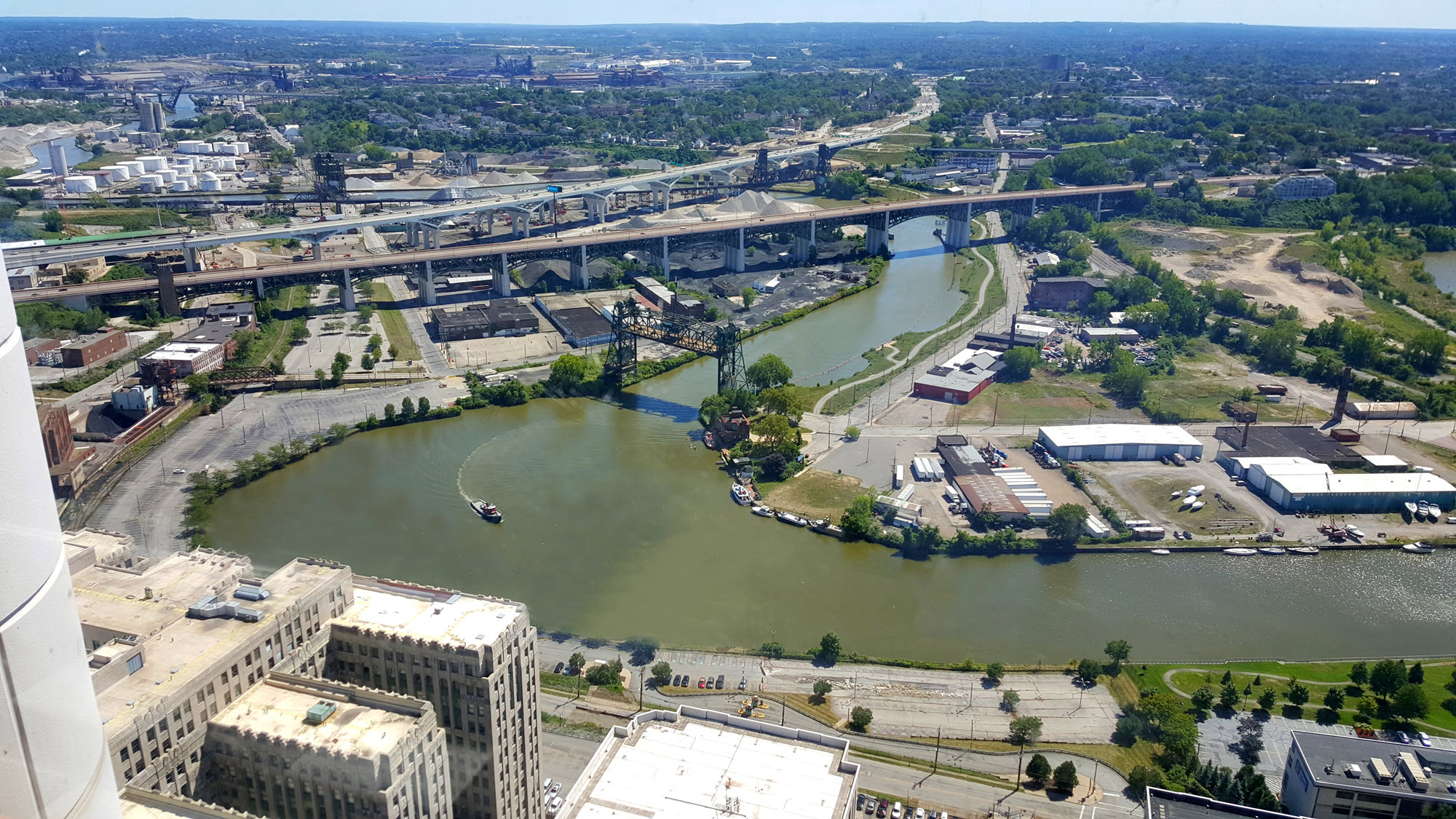
This week in civil engineering history: Although not the first, the most well-known fire on the Cuyahoga River in Cleveland occurred on June 22, 1969, inspiring landmark legislation to combat pollution.
Cleveland, Ohio, became a major industrial center at the time of the American Civil War. Like many other cities in the nation that were built on water, Cleveland turned its back on its river, the crooked Cuyahoga. It became a convenient means of disposal for the sewage and industrial waste from steel, oil, chemical, shipbuilding, paint, paper, and other factories that emerged in the 1860s, contributing a toxic mixture into the river. Within a few years, oil slicks and animal carcasses were routine sights on the bubbling river.
Before the end of the Civil War there were 20 refineries in the Cleveland area. As early as 1868, the Cuyahoga River caught fire, an incident that occurred regularly not only in Cleveland, but in other industrialized cities in the United States. In the late 19th century, the Cuyahoga was described as “so flammable that if steamboat captains shoveled glowing coals overboard, the water erupted in flames.” Notable fires occurred on the Cuyahoga in almost every decade for a century.
In 1912, a spark ignited leaking oil, prompting explosions and a fire that killed five people. In 1936, the river burned for five days, and in 1952, the most substantial Cuyahoga River fire on record occurred, causing $1.3 million in damages. However, it was not until 1969 that the Cuyahoga became a symbol of ecological catastrophe and environmental alarm.
Around noon on June 22, 1969, floating debris was ignited on the river by sparks caused by a passing train. Though reportedly intense, the fire was under control within 30 minutes. The event received little local coverage, and the blaze was contained before photographers arrived. However, the fire received significant negative national media coverage and Cleveland’s image was linked with the calamity, using a photo that was actually from the 1952 fire.
The national media barrage from the Cuyahoga River fire gave a symbolic boost to the ecological movement in the nation. After the 1969 fire, Cleveland’s mayor Carl Stokes worked with his brother, Congressman Louis Stokes, to push for environmental regulation and help shape public perception of it as a turning point. Partially motivated by the 1969 Cuyahoga River fire, Congress passed the National Environmental Policy Act, which was enacted on Jan. 1, 1970.
Reuben Hull, P.E., PMP, M.ASCE, is civil regional manager for LaBella Associates in Albany, New York, and a self-made historian who has penned numerous articles on civil engineering history. An active ASCE member, Hull is a corresponding member and former chair of the History and Heritage Committee, serves as vice president of the Mohawk-Hudson Section, served as president of the New Hampshire Section, 1999-2000, and was named New Hampshire Young Engineer of the Year in 1997.
Follow his daily Civil Engineering Almanac series on Twitter: @ThisDayInCEHist.



